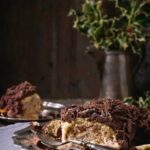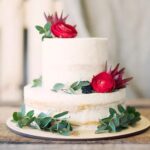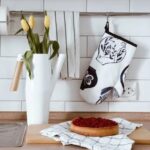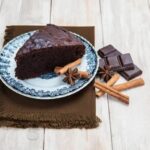Are you ready to elevate your cake decorating skills? The first step is understanding the importance of a piping bag. In this article, we will explore how to make a cake decorating piping bag from simple materials and tools that you probably have in your kitchen. With our step-by-step guide and tips, you’ll be able to create beautiful designs on your cakes with ease.
When it comes to cake decorating, the piping bag is an essential tool for achieving intricate designs, adding delicate details, and creating impressive borders. Whether you’re a seasoned baker or just starting out, knowing how to make your own piping bag can save you time and money while still achieving professional-looking results.
To create your DIY cake decorating piping bag, all you need is some parchment paper, scissors, tape, and a decorating tip. It’s simple, cost-effective, and gives you the freedom to customize the size and design of your piping bag to suit your specific decorating needs. With our comprehensive guide and expert tips for effectiveness, you’ll be able to master the art of using a homemade piping bag for all your cake decorating projects.
Materials & Tools Needed
When it comes to making your own DIY cake decorating piping bag, having the right materials and tools is essential to ensure a successful outcome. Here’s a list of everything you’ll need to get started on creating your very own piping bag:
Parchment Paper
Parchment paper is the key ingredient in making a DIY piping bag. It is important to use parchment paper as opposed to wax paper or regular printer paper, as it is non-stick and can withstand the pressure of squeezing frosting through it.
Scissors
A pair of good quality scissors will be needed to cut the parchment paper into the desired shape and size for the piping bag. Sharp scissors will make it easier to achieve clean cuts, resulting in a better final product.
Tape
Using tape is crucial for securing the shape of the piping bag and ensuring that it holds together while in use. It’s best to use a strong, durable tape that will not easily come undone as you pipe out your decorations on the cake.
Decorating Tip
Lastly, you’ll need a decorating tip to insert into the piping bag. There are various types of tips available, each creating different patterns when frosting is piped through them. Make sure to choose a tip that suits your desired decoration style, such as open star tips for creating rosettes and closed star tips for stars and borders.
Step-by-Step Guide
To make a DIY cake decorating piping bag, start by gathering all the necessary materials and tools. You will need parchment paper, scissors, tape, and a decorating tip of your choice. Parchment paper is an ideal option for creating a homemade piping bag as it is sturdy enough to hold the icing or frosting and can be easily manipulated for shaping.
Cutting the Parchment Paper
Begin by cutting a square or rectangle piece of parchment paper, depending on the size of piping bag you need. A standard size is usually around 15 inches in length. Use sharp scissors to achieve clean edges that will make it easier to work with the parchment paper.
Folding and Shaping
Once you have your parchment paper cut to the desired size, place it on a flat surface and fold it diagonally to form a triangle shape. Then, take one corner of the triangle and roll it towards the opposite side, creating a cone shape. Make sure to leave enough space at the top for easy filling with icing or frosting.
Securing the Tip
After shaping the parchment paper into a cone, secure the tip by placing your chosen decorating tip at the end of the cone opening. Use tape to secure the tip in place, ensuring that there are no gaps where icing can escape during use. Make sure that the tip is securely attached so that it doesn’t come loose while decorating your cake.
By following these step-by-step instructions, you can create your own cake decorating piping bag using simple materials found in most kitchens. This homemade piping bag can be used for various decorative techniques such as writing messages, creating borders, making rosettes and stars, or adding intricate designs to your cakes and cupcakes.
Tips for Effectiveness
When it comes to making your own cake decorating piping bag, there are a few tips and tricks that can help ensure its effectiveness and ease of use. Here are some important tips to consider:
- Use quality parchment paper: When making your DIY piping bag, it’s important to use good quality parchment paper that is sturdy enough to hold the frosting or icing without tearing.
- Secure the tip tightly: To prevent any leakage or slipping of the decorating tip, make sure to secure it tightly with tape at the pointed end of the piping bag. This will ensure that the icing or frosting comes out only through the tip as intended.
- Practice proper folding technique: When folding and shaping the parchment paper into a cone, make sure to crease the edges well and fold them securely to avoid any open gaps where the frosting could escape.
In addition to these tips, it’s also important to consider how you handle and store the homemade piping bag. It’s best to keep it in a cool, dry place when not in use. Proper cleaning is essential as well. After each use, wash the piping bag thoroughly with warm soapy water and allow it to air dry completely before storing.
By following these tips for effectiveness, you can ensure that your DIY cake decorating piping bag works seamlessly for all your cake decorating needs. With a little practice and attention to detail, you’ll be surprised at how easy it is to create beautifully decorated cakes using your homemade piping bag.
Different Piping Techniques
When it comes to cake decorating, the use of different piping techniques can take your creations to the next level. With a homemade piping bag made from parchment paper, there are various techniques that you can explore to add beautiful designs and decorations to your cakes.
One popular technique is creating rosettes, which involves piping swirls of frosting in a circular motion to mimic the appearance of a rose. This technique adds a delicate and elegant touch to any cake, making it perfect for special occasions like weddings or anniversaries.
Another versatile piping technique that can be achieved with a DIY piping bag is creating stars. By simply adjusting the angle and pressure of the piping bag, you can produce smaller or larger stars to adorn your cakes with intricate patterns or fill in larger areas with texture. Stars are ideal for adding visual interest and dimension to your cake designs, and they can be combined with other techniques to create visually stunning compositions.
Additionally, borders are another key piping technique that can be easily executed with a homemade piping bag. Whether you want to create simple straight lines, scalloped edges, or elaborate ruffled borders, a DIY piping bag allows you to have complete control over the design and thickness of the border.
Borders serve as the finishing touch for many cake designs, framing the top and bottom edges and enhancing the overall presentation of your creation. With these various piping techniques at your disposal, using a homemade piping bag opens up endless possibilities for creative cake decorating that will impress both yourself and others alike.
Cleaning and Storage
Cleaning and storing your DIY cake decorating piping bag properly is essential to ensure its longevity and maintain its effectiveness for future use. After using the piping bag, it is important to remove any remaining frosting or icing from the inside and outside of the bag. This can be done by using warm soapy water and a cleaning brush to thoroughly clean the bag.
Once the piping bag is clean, it should be allowed to air dry completely before being stored. Placing a clean dish towel inside the bag can help absorb excess moisture and speed up the drying process. It is important to ensure that the bag is completely dry before storing it to prevent mold or mildew from developing.
When storing the DIY cake decorating piping bag, it is best to keep it in a cool, dry place away from direct sunlight. Hanging the piping bags on a hook or placing them in a container where they can stand upright will help maintain their shape and prevent any decorations or tips from getting crushed.
Proper storage of the homemade piping bags can extend their lifespan, allowing you to reuse them for future cake decorating projects. By following these cleaning and storage guidelines, you can ensure that your DIY cake decorating piping bags are always ready for use whenever you need them.
| Cleaning Tips | Storage Tips |
|---|---|
| Remove all frosting from inside and outside of the bag with warm soapy water. | Store in a cool, dry place away from direct sunlight. |
| Air dry completely before storing, using a clean dish towel inside to absorb excess moisture. | Hang on a hook or place in an upright container to maintain shape. |
Alternative Options
If you don’t have parchment paper at hand, there are still alternative methods or materials that you can use to create a piping bag for cake decorating. Here are some options to consider:
1. **Plastic Zip-Top Bag**: If parchment paper is not available, a plastic zip-top bag can be used as an alternative for creating a piping bag.
Simply place the decorating tip at one of the bottom corners of the bag and use scissors to snip off the very tip of the corner. This will create a small opening for the frosting to pass through, allowing you to decorate your cake in a similar way to using a traditional piping bag.
2. **Homemade Piping Cone**: Another option is to make a homemade piping cone using wax paper or aluminum foil. Start by cutting a square piece of wax paper or aluminum foil and then rolling it into a cone shape. Secure the shape with tape and cut off any excess material from the small end of the cone. This can also be an effective alternative when parchment paper is not readily available.
3. **Reusable Silicone Piping Bags**: If you prefer a more sustainable option, reusable silicone piping bags are an excellent alternative to disposable parchment paper bags. These can be washed and used again, making them an eco-friendly choice for cake decorating. Just insert the decorating tip into the end of the silicone bag and fill it with frosting before use.
With these alternative methods or materials, you can still create a piping bag even if parchment paper is not available, ensuring that you can continue with your cake decorating project without any interruptions.
Troubleshooting
In conclusion, making a DIY cake decorating piping bag can be a cost-effective and convenient way to enhance your cake decorating skills. By using simple materials like parchment paper, scissors, tape, and a decorating tip, you can create a versatile tool that allows you to unleash your creativity in the kitchen.
The step-by-step guide provided in this article gives clear instructions on how to make a piping bag and offers tips for its effectiveness, ensuring that you can achieve professional-looking cake decorations at home.
It’s important to remember that as with any DIY project, there may be some common issues that arise when using a homemade piping bag. However, this article has addressed these potential problems in the troubleshooting section and offered practical solutions to overcome them. This ensures that even if you encounter difficulties while using the piping bag, you have the knowledge and tools to troubleshoot and continue with your cake decorating efforts.
Whether you are creating rosettes, stars, borders or any other decorative elements on your cakes, the homemade piping bag allows for endless possibilities. By exploring different piping techniques and understanding how to properly clean and store the DIY piping bag for future use, you can continue to elevate your cake decorating skills and produce stunning desserts for any occasion.
Additionally, by mentioning alternative options for creating a piping bag when parchment paper is not available, this article ensures that everyone can take part in this creative process regardless of their resources.
Frequently Asked Questions
How Do You Make a Cake Piping Bag at Home?
Making a DIY piping bag at home is quite simple. All you need is a plastic sandwich bag or parchment paper. For a plastic bag, simply fill it with the icing or frosting, then twist the top of the bag to push the icing down to one corner.
Next, snip off a small piece of that corner and you have a makeshift piping bag ready to use. If you’re using parchment paper, cut it into a triangle, roll it into a cone shape, then fold the tip to form a little point for piping.
What Can I Use Instead of Piping Bag?
If you don’t have a piping bag on hand, there are several alternative options you can use for decorating cakes and other baked goods. One popular substitute is using a resealable plastic bag like Ziploc and cutting off one of its corners to create an opening for piping.
Another option could be using a squeeze bottle with a small opening as an alternative to traditional piping bags.
How Do You Make a Ziploc Bag Into a Piping Bag?
Transforming a Ziploc bag into a makeshift piping bag is quick and easy. Simply scoop your icing or frosting into the resealable plastic bag, then seal it shut.
After that, snip off one of the bottom corners of the bag to create an opening for piping your decorations onto your cake or dessert. With this simple trick, you can achieve similar results to using a traditional piping bag without having to make an extra purchase.

Welcome to my blog about home and family. This blog is a place where I will share my thoughts, ideas, and experiences related to these important topics. I am a stay-at-home mom with two young children. I hope you enjoy reading it! and may find some helpful tips and ideas that will make your home and family life even better!





